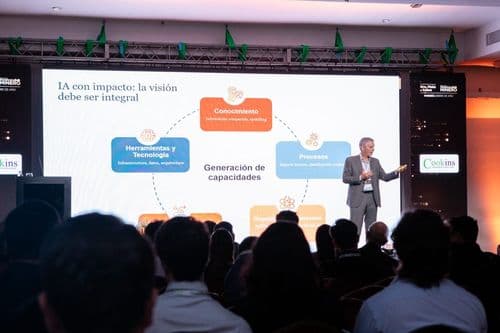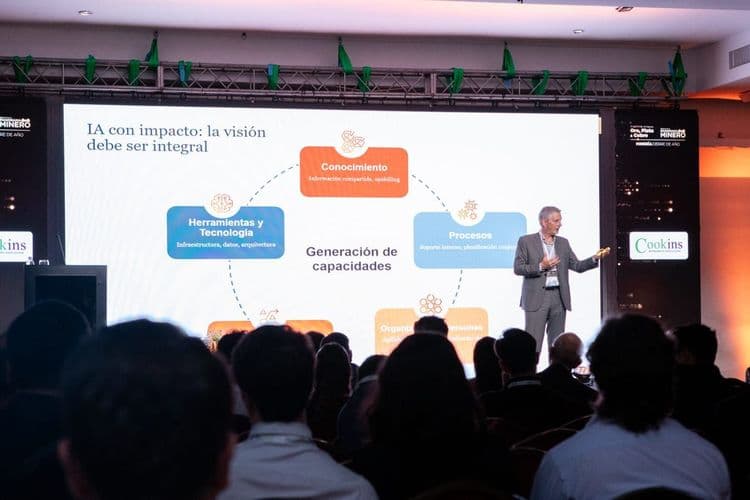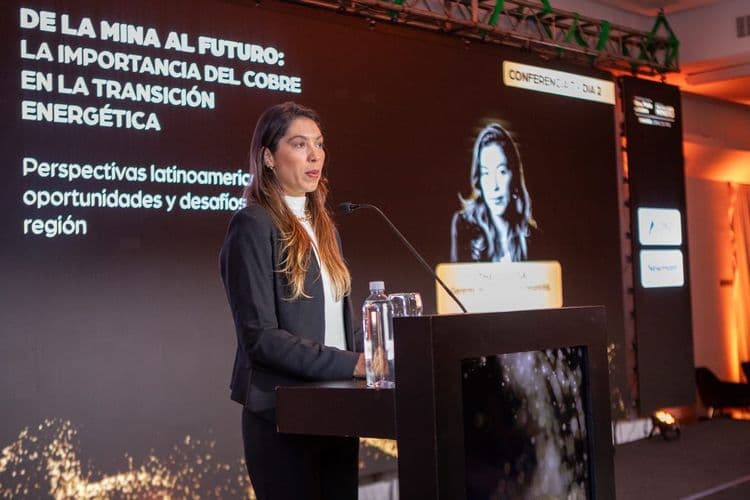It comes as no surprise that 2020 has seen a lot of changes in the way businesses and individuals operate, where, with whom, and how. In this article, we specially look at Canada, and its relation to mining and resources’ investment and operational interests from Australia.
The Canadian Government is supporting the International Mining and Resources Conference (IMARC) Online this year to promote trade and investment opportunities for Canada, specifically to the Australian market. We asked Bertrand Raoult, Trade Commissioner, Foreign Investment Attraction from the Consulate General of Canada based in Australia, why this is important to his Government?
“Canada and Australia are indeed recognized as leading mining nations. The Canadian minerals sector is a mainstay of the economy that supports jobs and economic activity in every region of Canada,” Bertrand said. “Canada is home to almost half of the world’s publicly listed mining and exploration companies, and the Canadian Government recognises that the relationship between natural resources and clean technologies is integral to Canada’s economy.”
As a result, he said, “Canada offers great prospects for Australian companies willing to explore greenfield opportunities, as well as for companies that already have a presence in the country to expand their current operations or to investigate new projects.”
“In 2018, the minerals sector invested CAD 13 billion in new capital construction and in machinery and equipment. Current and potential investment in major mining-related projects (eg. mine constructions, redevelopments, expansions and processing facilities) over the next 10 years is estimated at CAD 80 billion in capital expenditures.”
Some notable stats worth mentioning from Bertrand were:
- Canada produces some 60 minerals and metals at almost 200 mines and 6,500 sand, gravel and stone quarries, for a total value of CAD 47.0 billion in 2018.
- Canada’s Minerals sector exports are constantly growing and represented a value of CAD 104.6 billion in 2018. In 2018, the minerals sector directly employed 409,000 individuals.
- Canada is the global leader in the production of potash and ranks among the top five global producers for cadmium, cobalt, diamonds, gemstones, gold, graphite, indium, nickel, niobium, platinum group metals, salt, titanium concentrate and uranium.
- Canada also accounts for a significant proportion of the global production of primary aluminium from imported bauxite and alumina.
“In terms of exploration, Canada benefits from a diversified mineral endowment that includes traditional commodities, as well as commodities used in highly clean energy applications and advanced technologies, such as rare earth elements, graphite and lithium,” he said. “Canada remains the world’s top destination for non-ferrous mineral exploration in 2018, attracting 15% of global exploration budgets. Mining and mineral exploration companies spent CAD 2.3 billion on exploration and deposit appraisal projects in Canada in 2018.”
Interestingly also, Bertrand mentions that Indigenous representation in the minerals sector has increased in the last decade, especially in the mining industry.
“More than 16,500 Indigenous people are employed in the minerals sector representing 12% of the mining industry’s labour force, making it the second-largest private sector employer on a participation basis.”
“Finally, developing Canada’s minerals sector in clean and sustainable ways is a key priority of the Canadian Government. Initiatives include, improving the productivity of existing mines and developing technologies to accelerate the development of new mines; improving water efficiency; minimizing and managing mine waste; and improving energy efficiency and reduce greenhouse gas emissions.”
We also asked Bertrand for some commentary on mining exploration financing and funding in the Canadian market.
“The Toronto Stock Exchange (TSX) and TSX Venture Exchange (TSXV) are the world’s primary listing venues for mining and mineral exploration companies, with more than 1,200 issuers, accounting for almost 50% of global listings in 2018,” he said. “Nearly one-third (CAD 6.5 billion) of the world’s total equity capital for these activities was raised by companies listed on these exchanges, which also accounted for 49% of the number of mining equity financings for mineral exploration and mining globally. Canada is number one globally in equity financing raised for mining and mineral exploration.”
“The mining industry is a highly cyclical and capital-intensive, with a long lead time between initial investment and commercial production. Accordingly, the federal and provincial income tax and provincial mining tax systems treat exploration and other intangible mining expenses generously. Mining companies can recover most of their initial capital investment before they need to pay significant taxes. The income tax regimes also include generous loss carry-over rules that help soften the negative financial impacts of fluctuating prices.”
Bertrand also mentioned that generous incentives also apply to the industry. For more information on the Mineral Exploration Tax Credit (METC), which helps exploration companies raise equity funds by passing on tax credits to investors on eligible expenses, Bertrand and his team can be contacted at IMARC Online from 24 – 27 November or via the Consulate General of Canada directly.
A consistent and big challenge faced by many businesses and individuals in 2020 has been international mobility; as a result of border restrictions and travel issues. This has seen a knock-on effect for cross border transactions, skills mobility, and due diligence for investment and exploration. We asked Bertrand, how the Canadian Government is looking to support international interests despite these challenges?
“COVID-19 has indeed radically changed the growth outlook all around the world. All G-7 countries are forecasted to experience recessions in 2020. Even if Canada’s economy is anticipated to contract by 6.8%, it is expected to rebound and grow at 5.5% in 2021. As a result of this robust business environment, Canada still ranks first in the attractiveness for entrepreneurs,” he said.
“The Government has taken a number of steps to help ensure that businesses in sectors, such as mining, that continue to have urgent labour needs at this time can find the workers they need in order to continue providing goods and services to Canadians.”
“Allowing foreign workers to enter Canada recognizes their vital importance to the Canadian economy. In order to safeguard the continuity of trade, commerce, health and food security for all Canadians, temporary foreign workers are allowed to travel to Canada under exemptions put in place to the air travel restrictions that took effect on March 18.”
In addition to health screening protocols before travel, all individuals entering from abroad must isolate for 14 days upon their arrival in Canada. “Employers of these workers should take all possible steps to protect their health and safety by implementing practices and procedures recommended by public health authorities and providing appropriate protective equipment and products. Further, workers who can perform their tasks remotely should do so. Public Safety Canada has compiled a non-exhaustive list of essential services and functions to support this effort; mining is on this list under the Manufacturing sector.”
In another interview we did, we asked IMARC Online speaker, Lisa Davis, Chief Executive Officer of PearTree Securities about charity flow-through financing. This may be a relatively new concept to the Australian market, but is something Canadian investors and project owners see great benefits in.
“Charity flow-through financing combines two separate tax incentives available under the Income Tax Act (Canada),” Lisa said. “The tax deductions associated with exploration expenses have little value to non-revenue producing exploration companies and other early stage resource companies. These companies can issue flow-through shares to finance exploration expenses to be incurred in Canada and transfer the expenses to be funded by the share offering to the subscribers.”
“Canadian resident subscribers are entitled to deduct the subscription price from their taxable income as well as to receive certain additional tax credits for grass-roots exploration.”
“In a gifting arrangement, these subscribers donate their shares to charities from which pre-identified buyers will purchase the shares. The subscribers/donors receive a donation receipt for the donated shares giving rise to a further tax credit for the amount of the sale proceeds received by the charity.”
“The additional tax value built into a charity flow-through financing allows issuers to command healthy premiums for the shares. At the same time the purchase price from the charities can be at a significant discount to market.”
We wanted to further understand how Australian projects based in Canada benefit from this model and is this something Australian investors can find value in too.
Lisa answered by saying, “the proceeds of sale of flow-through shares can only be used for projects on Canadian soil, but the issuer of the shares need not be incorporated under the laws of a Canadian jurisdiction. An Australian mining or mineral exploration company can issue flow through shares and benefit from the premium offering prices meaning less dilution.”
“Australian investors have much greater opportunity to buy into companies exploring in Canada through the charity flow-through format. Before this innovation, non-Canadian investors were shut out of many early stage financings since about two-thirds of exploration financing in Canada is funded using flow through shares. Because only Canadian residents can make use of the tax deductions, the pricing of these offerings doesn’t make sense for foreign investors,” said Lisa.
“However, arrangements can be made for Australian investors to acquire the shares from the charities to which they’ve been donated at a discount to market. They benefit not only from better pricing, but their investment results in a greater amount available to the issuer for exploration – generally in the range of 25 to 75% more.”
In recent projects that have recently closed via this model, whether on the TSX or ASX, we asked Lisa what some learning insights have been.
“Peartree has been doing this for well over a decade now so the process has become very streamlined and well-known in the Canadian marketplace,” she said. “When we are dealing with Australian investors or dealing with an ASX listed company, the settlement process can be a little trickier but we have worked through these challenges and know how to address them.”
“It’s also important to understand the application of Canadian tax law regarding flow-through shares to ensure that a non-Canadian company uses the proceeds of a flow-through share offering in technical compliance with the rules. Mistakes can be made if you’re not intimately familiar with these technical matters so it’s important to deal with a specialized firm that can offer the guidance needed to navigate the rules.”
Lisa, along with Angelina Mehta of Laurentian Bank Securities and Paul Fowler of Benz Mining, will be discussing this model further at IMARC Online on 27 November. For the first time ever, it is free to attend all conference presentations at IMARC. Claim your free expo and content pass here to gain more insights from Lisa, as well as benefit from a dedicated 60-minute session with the Government of Canada.
For further information please visit imarconline.com


























